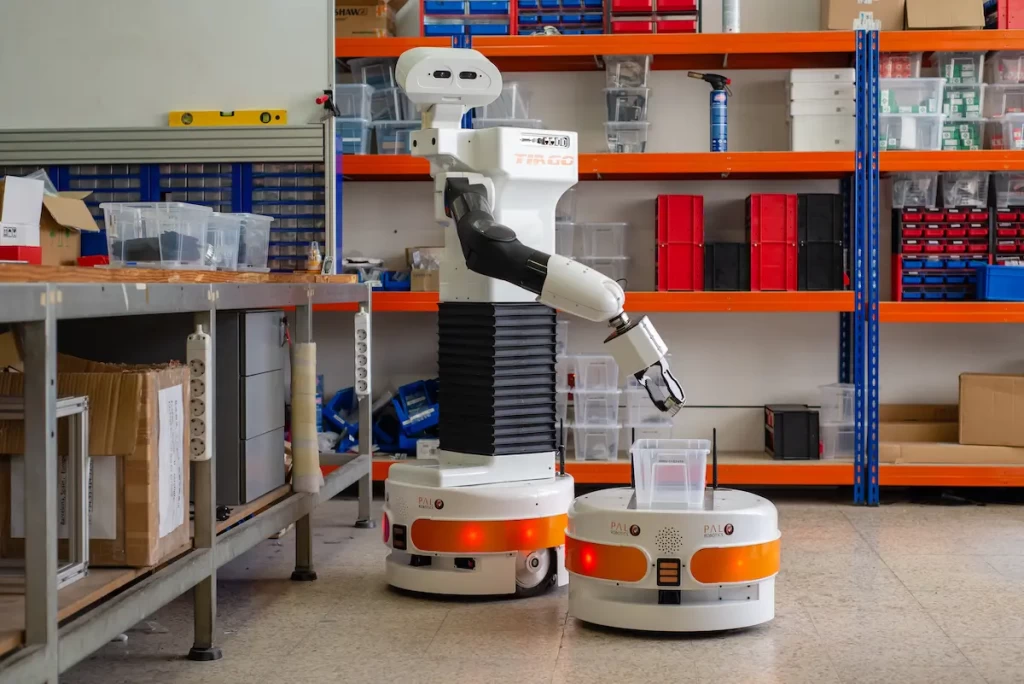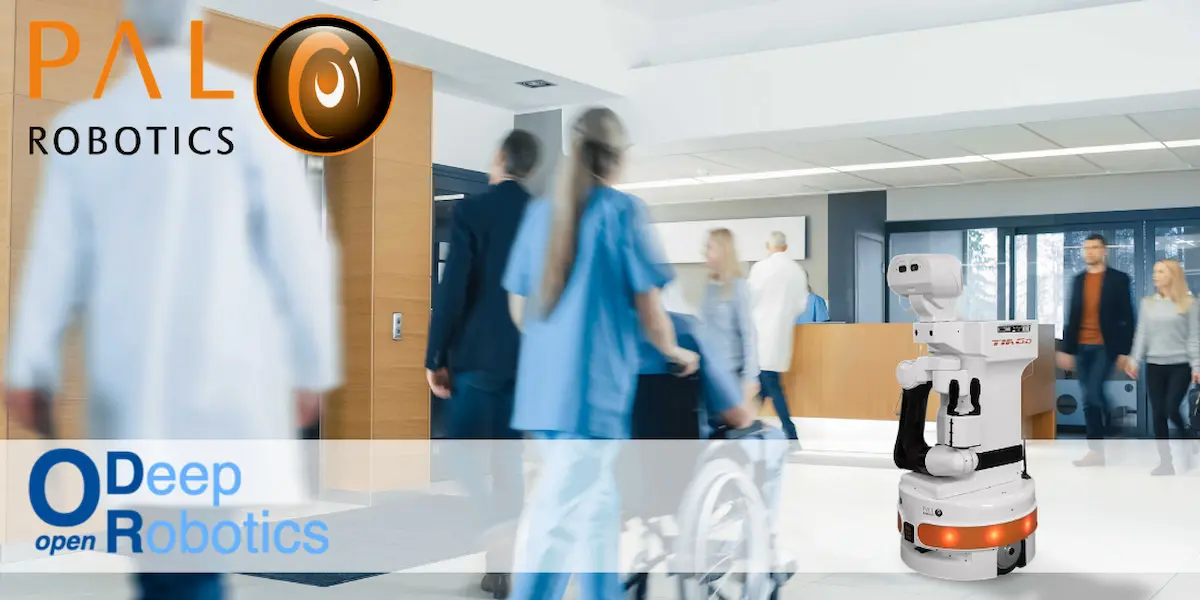PAL Robotics work with TIAGo for healthcare and hospitals
Advances in Artificial Intelligence in the field of robotics have led to major developments, such as self-driving cars and algorithms that can both understand and respond to questions. Yet, open frameworks in deep learning can be challenging to deploy in robotics since they have a steep learning curve and radically different methodology.
The OpenDR project we are a partner in aims to address this by developing an open deep learning toolkit with user-friendly Robot Operating System (ROS) compliant deep learning models for robotics.
OpenDR has the goal of developing a robotics toolkit for deep learning software functions. In this toolkit, these deep learning software functions are for advanced perception and cognition abilities in robots. The project’s ambition is to provide improved technical capabilities in the “AI and Cognition” core technology, and OpenDR hope that “this broad range of tools and software modules that will be available in the OpenDR toolkit will be an indispensable addition to the workbenches of companies and research institutions.”
The project focuses on enabling cooperative human-robot interaction as well as the development of cognitive mechatronics.
This project also includes a number of use cases in areas including healthcare, agri-food and agile production, and PAL Robotics’ role in this project is in integrating algorithms to be applied to robots in healthcare settings. The aim here is for these Artificial Intelligence (AI) developments in robotics to help hospitals during the COVID-19 pandemic, and also to support older people in the community with their health needs.
The project use case PAL Robotics will take part in for healthcare robotics has the goal of improving the cognitive capabilities of the TIAGo robot, so that the robot can understand and interact with humans better. PAL Robotics’ TIAGo (which stands for Take-it-and-go), combines perception, navigation, manipulation & Human-Robot Interaction skills out of the box.
Efficient technological solutions have great potential in keeping costs and staff requirements in healthcare manageable, as well as improving the quality of services on offer, with healthcare spending overall expected to keep increasing, in particular with the current pandemic, and also longer-term, due to the increasing proportion of older people in the population. The aim is to make it easier to create robots with a higher readiness to be deployed in healthcare quickly, due to the capabilities already provided by the OpenDR toolkit.
Deploying TIAGo as a personal robotic assistance platform would allow the robot to follow the patient from hospital to rehabilitation institutions, or even to their home, to assist with daily needs. Additionally, our mobile manipulator robot has the ability to help users in care homes, and can be disinfected to follow safety protocols during the COVID-19 pandemic.
In this project, TIAGo will serve as an end-user assistant by greeting visitors in a healthcare setting and delivering objects to them. To be able to do these tasks effectively, our mobile manipulator robot needs to have incorporated human presence recognition. Project activities will include working with PAL robotics‘ mobile manipulator to improve the robot’s abilities in recognizing humans and their emotional state, understanding their commands, interacting with objects and navigating in the environment.
The following tasks will be available in the demonstrator site to benchmark the OpenDR modules in a real healthcare scenario:
- Visiting the home: this task focuses on safe navigation in dynamic environments, localization, obstacle avoidance, tracking and recognizing a person and human following and guiding navigation modes. In this task, the robot should visit a set of predefined waypoints while avoiding and/or interacting with different obstacles based on the nature of the obstacle.
- Providing general purpose requests: this task aims at providing general purpose requests of the person inside the apartment-like site. It focuses on the integration of different robot abilities such as human-robot interaction, navigation, localization, and robot-object interaction. The person gives a single speech command composed of actions from the following categories: Finding an item or a person in the apartment, Manipulating and delivering an object. The robot is required to understand the actions and execute them accordingly.

Other project use cases in OpenDR
Aside from the healthcare use case, OpenDR includes use cases in agricultural robotics – where autonomous tool-carriers will perform weed control (application of a chemical herbicide to weeds or soil) , and also agile production – where humans and robots will work together to perform shared tasks in a safe way.
OpenDR project partners are Aarhus University, Agro Intelligence, Aristotle University of Thessaloniki, Cyberbotics, Delft University of Technology, PAL Robotics, Tampere University and University of Freiburg. Partners will participate in the use cases, as well as evaluating the performance requirements needed in robotics applications using the OpenDR toolkit.
The overall project objectives of OpenDR are:
- To provide a modular, open and non-proprietary toolkit for core robotic functionalities enabled by lightweight deep learning
- To leverage Artificial Intelligence and Cognition in robotics: from perception to action
- To propose a co-integration of simulation and learning methodology for deep learning in robotics and demonstrate the potential of OpenDR in three prioritized application areas
- To establish strong links to robotics Digital Innovation Hubs
In addition to the OpenDR project, PAL Robotics works on many EU-funded projects covering areas such as smart cities, factories of the future and Artificial Intelligence (AI).
To read more about EU-funded projects we partner in, visit our collaborative projects webpage. Find out more about our TIAGo robot on our website. If you liked this post, do not miss out other posts about robots and technology in our blog!
